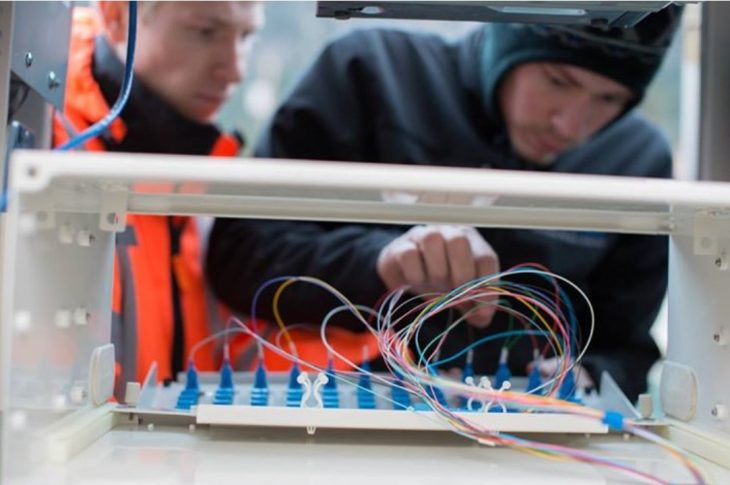
ALTHOUGH PEOPLE IN most Canadian communities take access to cable television and high-speed internet for granted, it’s safe to say that’s never been the case in Lytton, B.C.
Connecting the remote Interior B.C. community of about 250 people, nestled in the Fraser Canyon region two hours north of Abbotsford, has never been simple, but residents have always found a way. In the mid-1950s, according to the regional cable and internet provider LyttonNet, volunteers harnessed the power of a mountain stream with a hydroelectric turbine to bring electricity to the surrounding villages, carrying supplies for repairs up treacherous mountain roads that not even snowmobiles could access.
(Photo above from LyttonNet shows one of its volunteers connecting fibre optic customers. LyttonNet is now servicing over 300 rural households.)
“You do what you have to do to make it work,” says LyttonNet’s Daniel Mundall, in an interview with Cartt.ca. The community cable, wireless and internet provider, LyttonNet, is showing similar spirit in getting high speed internet service, via a fibre optic network, to the village of Lytton and its surrounding First Nations communities of Tuckozap 24, Klahkamich 17, Klickkumcheen 18, Nuuautin 2A, Nuuautin 2, Nuuautin 2B and Lytton 21A. The company now has about 300 homes and businesses connected to its fibre. It also provides wireless broadband wherever it can, too.
“When we first started looking at providing Internet services in 2006, most people here were still on dial-up, which was basically useless.” – Daniel Mundall, LyttonNet
“Not having connectivity is a huge disadvantage for residents and businesses here,” says Mundall. “There are some (online functionalities) where real time is crucial, and… when we first started looking at providing Internet services in 2006, most people here were still on dial-up, which was basically useless.”
At the time, Mundall says, there were several large barriers to providing high-speed Internet. “We were getting access to (wireless) frequencies we couldn’t use, because we couldn’t access affordable hardware,” he says. “Much of the land here is Crown land, and even with community support, getting permission to build a tower on Crown land is a very onerous two-year process. If you use private land, there are rents and licence fees, and that breaks the economic model if you’re building a tower that only serves ten people.”
Competition was also cause for concern: “We recognized that if we did not move to fibre, then Telus would move in and we would be left only with the outlying areas, which would make our business model nonviable, and (if we shut down) some homes in the outlying areas could lose connectivity completely.”
The most viable option, he explained, was to go fibre. LyttonNet spearheaded a fully community-owned fibre build in Lytton and surrounding First Nations communities, partially funded by the Province of British Columbia; the company is working on a similar project in the nearby village of Boston Bar.
“The first step was to design the network, which we did mainly through using maps from Google Earth,” Mundall recalls. “Then came the permits and construction, which took awhile.” Community members handled much of the construction work. Although the project began in 2014 as a 100% volunteer undertaking, Mundall says the increased funding has allowed LyttonNet to pay some residents who work on the project.
Once the fibre build is complete, Mundall says Lytton area residents will have access to high-speed internet that meets government connectivity standards. “We’ll also have the ability to offer unlimited usage,” he says. “It will be a real game changer for people.”
(Photo here is one of its employees installing a wind turbine at an off-grid Internet tower, to help provide needed additional power during the winter).



